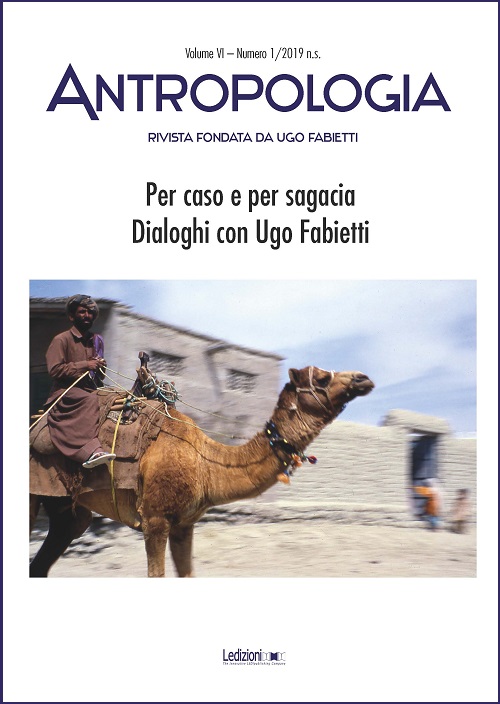Forme del sacro e arte contemporanea fra materiale e immateriale
DOI:
https://doi.org/10.14672/ada2019152693-116Parole chiave:
Arte contemporanea, Arte sacra, Credenza, Cattolicesimo, PentecostalismoAbstract
Partendo dal libro Materia sacra (2014), l’autore si propone di continuare a dialogare con il pensiero di Ugo Fabietti portando le questioni del sacro e del profano, del materiale e dell’immateriale sul terreno dell’arte contemporanea per contribuire, da questa prospettiva, a gettare una diversa luce su alcune dinamiche odierne del religioso. Dopo aver tracciato alcune coordinate storico-culturali dei rapporti fra arte contemporanea e cristianesimo, vengono analizzati due casi etnografici specifici: quello di un progetto di arte pubblica dell’artista Franco Ariaudo (Valle Camonica nel 2011) e quello di un’etnografia relativa all’estetica comunicativa della chiesa evangelica di Sabaoth (Milano). Nel primo caso sono esaminati i transiti fra arte pubblica e arte sacra, nel secondo i rapporti fra sacro religioso e stili comunicativi mutuati dall’arte e dal marketing. In questo modo la religiosità è posta in relazione con altre forme della credenza e del sacro: quelle del mondo dell’arte e della “religione dei consumi”.##submission.downloads##
Pubblicato
2019-04-18
Fascicolo
Sezione
Articoli
Licenza
Copyright (c) 2019 Antropologia

TQuesto lavoro è fornito con la licenza Creative Commons Attribuzione 4.0 Internazionale.
- Gli autori mantengono i diritti sulla loro opera e cedono alla rivista il diritto di prima pubblicazione dell'opera, licenziata sotto una Licenza Creative Commons - Attribuzione che permette ad altri di condividere l'opera indicando la paternità intellettuale e la prima pubblicazione su questa rivista.
- Gli autori possono aderire ad altri accordi di licenza non esclusiva per la distribuzione della versione dell'opera pubblicata (es. depositarla in un archivio istituzionale o pubblicarla in una monografia), a patto di indicare che la prima pubblicazione è avvenuta su questa rivista.




